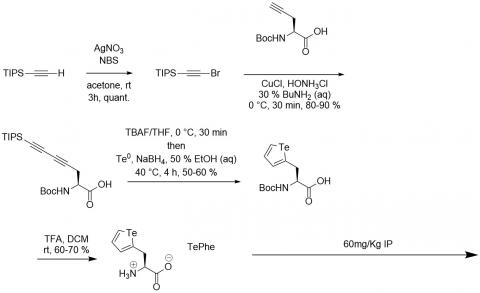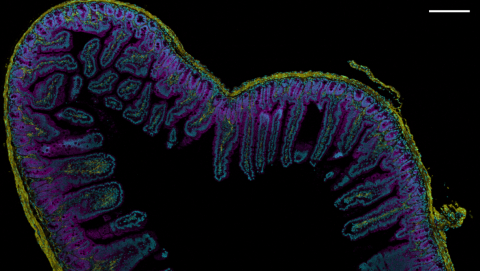Chemical Biology
We synthesize novel structures and characterize their influence on biology and disease.
Areas of Research
Mass Cytometry Reagent Development
Mass Cytometry is a technique to massively parameterize biological experiments. Imagine being able to measure 100 different proteins, metabolites and transcripts at the cellular level within a tissue in a single experiment. This is the potential of Mass Cytometry. (https://www.fluidigm.com/products-services/technologies/mass-cytometry)
A bit of History. Mass cytometry was developed at the University of Toronto by a team of scientists and has been commercialized by Fluidigm. Fluidigm manufactures the instruments close by in Markham and we collaborate heavily. Our team developed the first reagents for Mass Cytometry and we continue to generate new reagents and novel ways to use the instrument.
The generation of new reagents for Mass Cytometry necessitates that a heavy atom (heavier than selenium) is introduced into the structures. Tellurium has proven to be a very useful element for these probes allowing the generation of small drug like molecules for following biochemistry in vivo.
For example we have synthesized TePhe, a phenylalanine analogue which is taken up by cells and incorporated into proteins as phenylalanine.
TePhe is synthesized from propargyl glycine in three steps.PNAS 2019
Here is a section of murine intestine after treatment with TePhe. The purple colour is tellurium content showing the rapid protein synthesis in the intestinal crypts.
Many more elements and reagents are being explored. Please feel free to contact us if you would like to discuss ongoing projects.
Carbohydrate derivatives to understand and inhibit bacterial glycobiology
Bacteria love sugar. Sugars are their preferred carbon source, form the skeleton of their cells, and make up the polymers that are the outermost structures that contact the environment. We study the synthesis, modifications and properties of a key bacterial polysaccharide involved in biofilm formation called poly-N-acetylglucosamine (PNAG).
Polysaccharide probes
We have developed ways of monitoring PNAG production in real time using microscopy. These studies required some protein engineering, bacterial expression and the development of fluorescence-based assays.
Above is a movie of bacteria growing in a biofilm and the green fluorescence is the PNAG expression.
Inhibitor development
We are developing inhibitors to the production of PNAG. These inhibitors are characterized in vitro on purified enzymes to determine their mode of inhibition and inhibition constants. We collaborate to solve the co-crystal structures. We then move these into bacterial systems to follow their action.
Feel free to send us an email to arrange a time to discuss our on-going projects.




